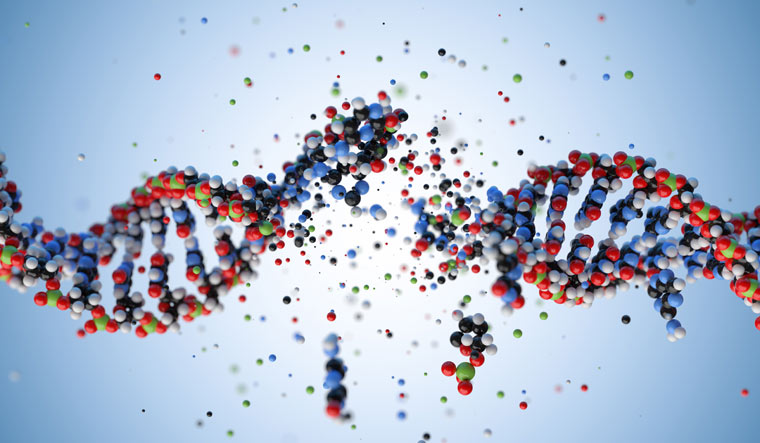Scientists at the University of Helsinki have unraveled the enigma surrounding the origin of small regulatory genes. These genes, known as microRNA genes, play a crucial role in coordinating the actions of classical genes in living organisms. The researchers have described a mechanism that creates DNA palindromes, which, under the right circumstances, evolve into microRNA genes.
The human genome consists of approximately 20,000 genes responsible for protein construction. Among these, a myriad of regulatory genes, including the smallest microRNA molecules measuring just 22 base pairs in length, orchestrates the intricate dance of gene expression.
While the number of genes remains relatively constant, new genes occasionally emerge during evolution, perplexing scientists who have long been fascinated by the genesis of these genetic marvels.
All RNA molecules necessitate palindromic runs of bases that lock the molecule into its functional conformation. However, the chances of random base mutations gradually forming these palindromic runs are exceedingly slim, even for the simplest microRNA genes, leaving researchers puzzled about their origin.
Enter the experts at the Institute of Biotechnology, University of Helsinki, Finland. In a project funded by the Academy of Finland, they embarked on a journey to uncover the secrets hidden within DNA replication errors.
Lead researcher Ari Löytynoja compared DNA replication to typing, stating, "DNA is copied one base at a time, and typically mutations are erroneous single bases, like mis-punches on a laptop keyboard. We studied a mechanism creating larger errors, like copy-pasting text from another context. We were especially interested in cases that copied the text backwards so that it creates a palindrome."
The study, recently published in PNAS, revealed that DNA replication errors could, at times, be beneficial. The researchers observed a connection to the structure of RNA molecules, specifically the hairpin-like structures formed by the pairing of adjacent palindromes.
MicroRNA genes, with their simple structure and hairpin folding requirement for proper functioning, became the focal point of the study. To gain further insights, the researchers developed a custom computer algorithm to model the gene history.
Postdoctoral researcher Heli Mönttinen explains, "The whole genome of tens of primates and mammals is known. A comparison of their genomes reveals which species have the microRNA palindrome pair, and which lack it. With a detailed modeling of the history, we could see that whole palindromes are created by single mutation events."
By focusing on humans and other primates, the researchers demonstrated that this newly discovered mechanism explains at least 25% of the novel microRNA genes. Encouragingly, similar cases were found in other evolutionary lineages, suggesting that this origin mechanism is universal.
The implications of this research reach far beyond the realm of genetics. The ease with which microRNA genes can arise from seemingly "nothing" has the potential to impact human health and deepen our understanding of the fundamental principles of biological life.
Heli Mönttinen emphasises the significance of the work, saying, "The emergence of new genes from nothing has fascinated researchers. We now have an elegant model for the evolution of RNA genes."
While the study focused on small regulatory genes, the researchers believe that the findings can be extrapolated to other RNA genes and molecules. The newfound mechanism, combined with natural selection, may pave the way for the creation of more complex RNA structures and functions.


